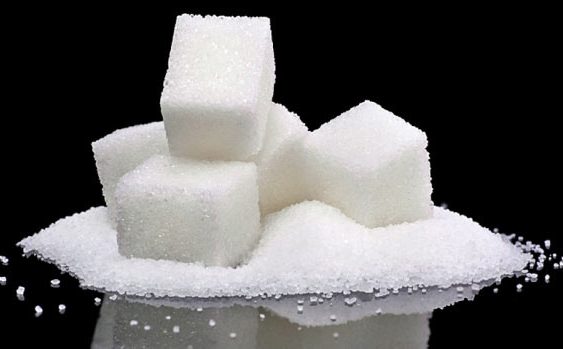Glycemic Load : the Difference with Glycemic Index

You may have heard the term Glycemic Index – and if you have, you probably know that the Glycemic Index ranks carbohydrate-containing foods based on their effects on blood sugar. But in order to really understand the effects of foods on your blood sugar, there’s another term you should get familiar with – Glycemic Load.
And the reason is simple.
In essence, the Glycemic Index measures a quality in a food. The Glycemic Index indicates whether or not a food contains easily digested carbohydrates – carbohydrates like refined starches and sugars that can lead to rapid rises in blood sugar.
But the Glycemic Load factors in the quantity of carbohydrate – the amount that is actually eaten in a typical serving. This is a very important distinction – and requires a little bit of explaining.
How The Glycemic Index and Load is Determined for Foods
To establish the Glycemic Index for a food, people are fed a measured amount of that food – specifically, an amount that supplies a set amount of carbohydrate (usually 50 grams). Then, blood sugar measurements are taken over a set period of time after the food is eaten. Using these measurements, the effect of the food on the blood sugar is calculated, and the resulting value is compared to pure sugar, which is given a value of 100.
Foods that cause the blood sugar to rise quickly and steeply will have a higher number (in other words, have a high Glycemic Index, or GI), while foods that cause a less dramatic rise in sugar will have a lower value.
High GI foods = have a value of greater than 70
Moderate GI foods = have a value between 56-69
Low GI foods = have a value of 55 or less
But here’s the catch. The amount of food that you’d need to eat in order to 50 grams of carbohydrate – the amount needed to establish the GI – varies quite a bit from food to food. For other foods, the amount of carbohydrate they contain per serving is so small that you’d need to eat huge amounts of them in order to get 50 grams of carbohydrate.
50 grams of carbohydrate = white bread (two slices) OR white rice (a small bowl) OR 13 whole apricotsOR 50 watermelon balls
This is where the Glycemic Load, or GL, comes in.
When a food has a high GI value, it means that the food contains readily digestible carbohydrates that could cause your blood sugar to rise quite high, relatively quickly. But what really matters is how much of that readily available carbohydrate you actually eat.
The amount of carbohydrate you get from two slices of white bread – about 50 grams – is a lot different from the amount you’d get from a typical serving of watermelon (only about 6 grams), but white bread and watermelon have almost identical GI values.
So, the Glycemic Load takes into account the amount of carbohydrate that you would typically consume in a serving of food.
The GL is calculated by:
GI index of the food X the grams of carbohydrate in the serving of that food / 100
High Glycemic Load = Foods with a value of 20 or more
Moderate Gycemic Load = Foods with values that range from 10-19
Low Glycemic Load = Foors with values of 10 or less
Foods that have the lowest amount of carbohydrate per serving, then, will have a low GL. Vegetables (even higher GI vegetables like carrots or beets) have a low GL because they have so little carbohydrate per serving. And most fruits don’t have that much carbohydrate on a per serving basis, either, which is most of them have a low GL. Watermelon has a high GI (72), but a typical serving of watermelon contains so little carbohydrate that it won’t have much impact on your blood sugar – in other words, it has a low Glycemic Load (GL=4).
This is important, because if you were to focus only on eating foods with a low Glycemic Index, you might be cutting out healthy foods (like carrots or watermelon) unnecessarily. So, it’s important to consider the GL, too.
While the GI is defined only for individual foods, the GL can be calculated for any serving size of food, for an entire meal and, in fact, for an entire day’s meals. For this reason, it’s important to consider the GL of the diet overall.
Refined starches and sweets contribute the most to the overall Glycemic Load of the diet – so cutting down on these high GI foods can greatly reduce the overall Glycemic Load of the diet. At the same time, choosing healthier carbohydrates in the form of vegetables, whole fresh fruits, and whole grains can help to reduce the GL of the diet as a whole.
Low GL foods tend to be higher in fiber and, since they’re less processed, they retain their natural vitamins, minerals and phytonutrients. The fiber makes these foods more filling, and the low GL means they’re less likely to cause big swings in your blood sugar. As a result, you may experience better hunger control, while getting a healthy nutrient boost at the same time.
Try This Formula 1 Shake using low GI/GL ingredients!
Mango-Kiwi Shake
- 2 scoops Herbalife FI Nutritional Shake Mix, Vanilla Flavor (GI=20)
- 1 cup (250ml) lowfat milk (GI = 27; GL=4)
- ¾ cup (120g) mango chunks (GI= 5; GL = 8)
- 1 medium kiwi, peeled (GI = 53; GL =5)
- 4 ice cubes (GI = 0; GL = 0)
Place all ingredients in the blender and blend until smooth.
Note: Formula 1 Nutritional Shake Mix is low GI tested.
By Susan Bowerman, MS, RD, CSSD, FAND
__________________________
Independent Herbalife Member - Healthy FooD Nutrition Blog
Buy Authentic Herbalife Products Online :
*Fast Shipping directly from Herbalife Plant
*Freshest Herbalife Products Guaranteed
*Full Service
>>Click here and Get The Best Quality and Service Available 
Feel free to contact me! Fill the form below



